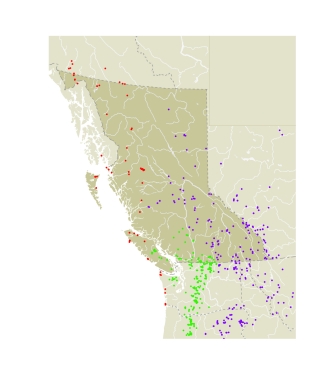AdultReakirt's Copper is easily distinguished from other small butterflies by the appearance of the ventral hindwing. It has a characteristic mottled grey pattern. On the upperside the wings of the male are a darker purple than those of other coppers. The females are brown on the upperside of the wings, with varying amounts of yellow/orange. The Charlotte Copper female has the most yellow and can be confused with females of the Small Copper in northwestern BC. The two species can be distinguished by the ventral hindwing pattern.
Immature StagesUndescribed.
SubspeciesThere are three subspecies in BC. The Charlotte Copper, L.m. charlottensis (Holland, 1930) (TL: Queen Charlotte Islands), is found on the Queen Charlotte Islands, in the northern Coast Ranges, and on the west coast of Vancouver Island. The nominate subspecies, L.m. mariposa (Reakirt, 1866) (TL: California), is found in the mountains of Vancouver Island, the Lower Mainland, and the Cascades. The Rocky Mountain subspecies, L.m. penroseae Field, 1938 (TL: Yellowstone Park, WY), occurs in the rest of the province.
